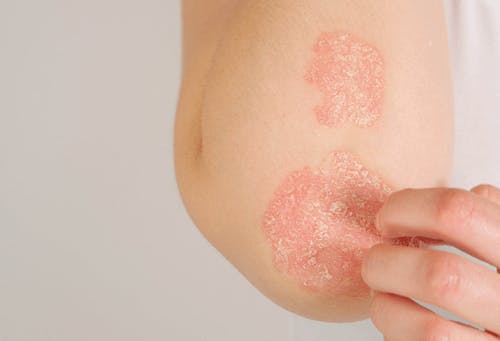The ‘mask of pregnancy’: Melasma symptoms and duration
Hyperpigmentation, or skin darkening, comes in different forms and has a range of causes. Age spots or “liver spots” are colloquial terms for the darker patches of skin that can appear with age. Melasma is another common form. It affects women far more than men and often presents during pregnancy. In fact, up to 50% of pregnant people can experience melasma.
Here’s what to know about the so-called “mask of pregnancy,” and what you can do about it.
What does melasma look like?
Brown or blue-gray discoloration of the skin is the marker of melasma. It can be patchy or look like the speckled pattern of freckles. People with darker skin are more commonly affected, particularly people with a light brown skin tone.
Often localized to the face, melasma usually appears on the forehead, cheeks, chin, bridge of the nose or above the upper lip.
Is melasma permanent?
Melasma can fade over time, but it may take months or even years. Hyperpigmentation in the dermis, or lower layer of the skin, is slower to dissipate than the outermost layer, the epidermis. Despite its persistence in some cases, melasma is not harmful and is not a form of cancer.
Because the condition is more common in pregnant people, hormones appear to play a role in developing melasma. As hormone levels return to pre-pregnancy levels, marks may disappear.
Sun exposure stimulates the production of the skin pigment melanin, so sunlight avoidance is recommended to prevent prolonged or recurring melasma.
Hyperpigmentation during pregnancy
While melasma — hyperpigmentation on the face — is a highly common condition during pregnancy, at least 85% of pregnant people experience a change in skin pigmentation.
Hyperpigmentation often occurs in already-darker areas of the skin, including the areolas, nipples, genitals and armpits. It may also present in the folds of the skin, the inner thigh or around the belly button.
Skin moles do not tend to darken during pregnancy, although they may expand as skin on the chest and abdomen stretches.
What are treatments for melasma?
Protecting your skin from the sun is a key way to reduce the darkening effects of melasma. Wide-brimmed hats, long-sleeve shirts, broad-spectrum sunscreen and simple sun avoidance are recommended.
Physicians may prescribe topical medicines, such as steroid creams or salicylic acid depending on the cause of melasma.
To avoid products without proven medical benefits and to receive safe treatment around pregnancy, consider consulting a board-certified dermatologist about hyperpigmentation concerns. You can access time-saving, expert advice tailored to your symptoms and skin tone at cortinahealth.com.



